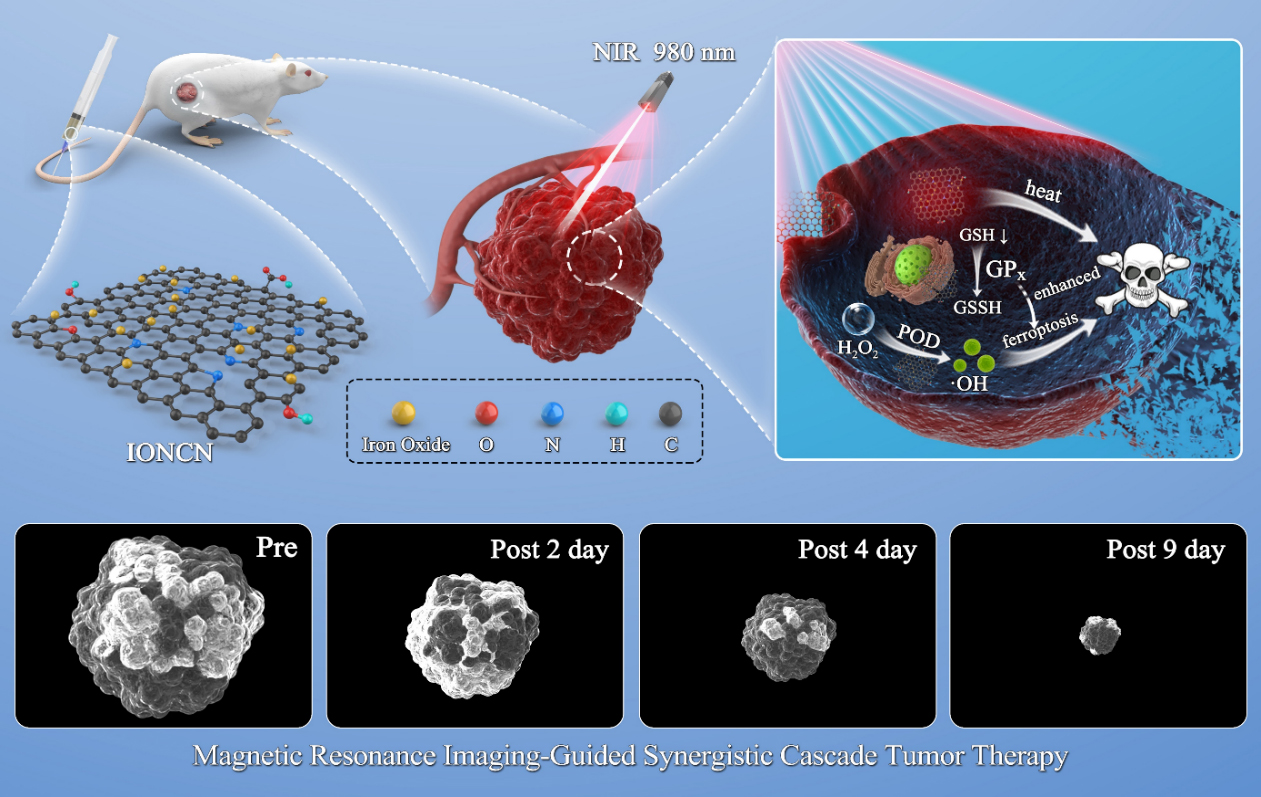
In a paper published on ACS Applied Materials & Interfaces recently, a collaborated research team led by Prof. WANG Hui and Prof. ZHANG Xin from High Magnetic Field Laboratory as well as Prof. QIAN Junchao from Institute of Health and Medical Technology, Hefei Institutes of Physical Science (HFIPS) of Chinese Academy of Sciences (CAS) reported a new kind of near-infrared-triggered nanozyme based on iron oxide nanocrystals embedded in N-doped carbon nanosheets (IONCNs) through a solvothermal route and their significant application prospects in synergistic cascade tumor therapy.
Chemodynamic therapy (CDT) was an efficient cancer treatment method determined by the striking difference between the tumor microenvironments (TMEs) and normal tissues. By triggering the Fenton or Fenton-like reaction, it could generate highly toxic hydroxyl radical (·OH) to achieve the killing of tumor cells. Unfortunately, the overexpression of glutathione (GSH) in TMEs limited the therapeutic efficacy by counteracting ·OH generation. Moreover, the normal cells or inflammatory cells were easily affected simultaneously owing to their similar characteristics to the TMEs. Therefore, it was necessary to develop an exogenous triggered nanozyme to realize tumor-specific catalytic therapy.
In this research, researchers used a one-step hydrothermal method to synthesize IONCNs.
The as-prepared IONCNs could absorb and convert 980 nm light to local heat that not only killed cancer cell by photothermal therapy but also induced the dissolution of iron oxide to produce Fe2+/Fe3+ in a weak acid solution.
The formed Fe2+ catalyzed the decomposition of hydrogen peroxide to generate hydroxyl radical for CDT. The formed Fe3+ acted as a glutathione peroxidase to amplify the oxidative stress of cancer cells and therapeutic effect of CDT.
Additionally, the IONCNs could be used as a magnetic resonance imaging contrast agent to visually monitor the treatment process of cancer.
This work was supported by the National Key R&D Program of China (Grant No. 2021YFA1600202), the National Natural Science Foundation of China (U2032162, U1932158, and 81871085), and the High Magnetic Field Laboratory of Anhui Province (AHHM-FX-2021-04). A portion of this work was supported by the High Magnetic Field Laboratory of Anhui Province.

NIR-triggered nanozyme for real-time MRI guided combined tumor therapy. (Image by LIU Hongji)